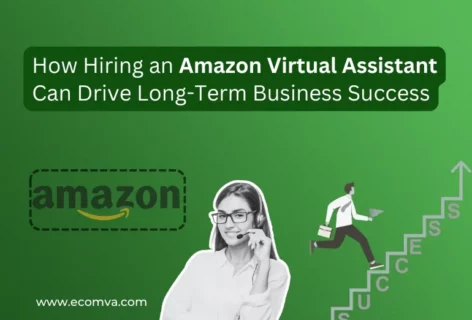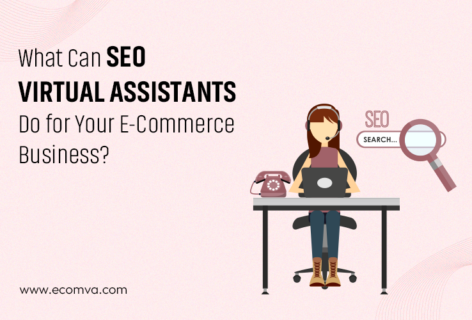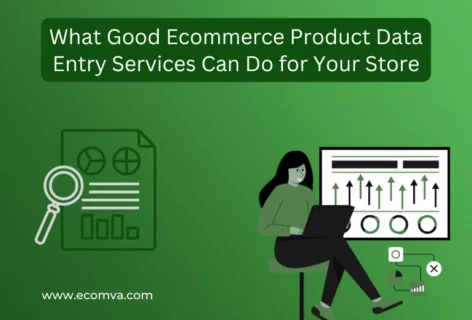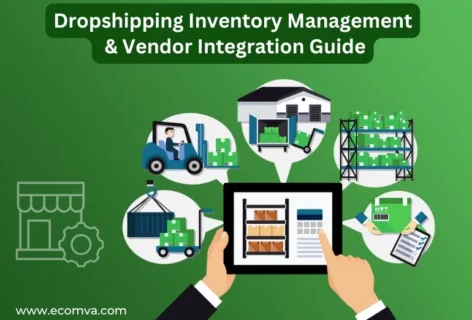Best Amazon Virtual Assistant Tips: How Successful Sellers Outsource Effectively
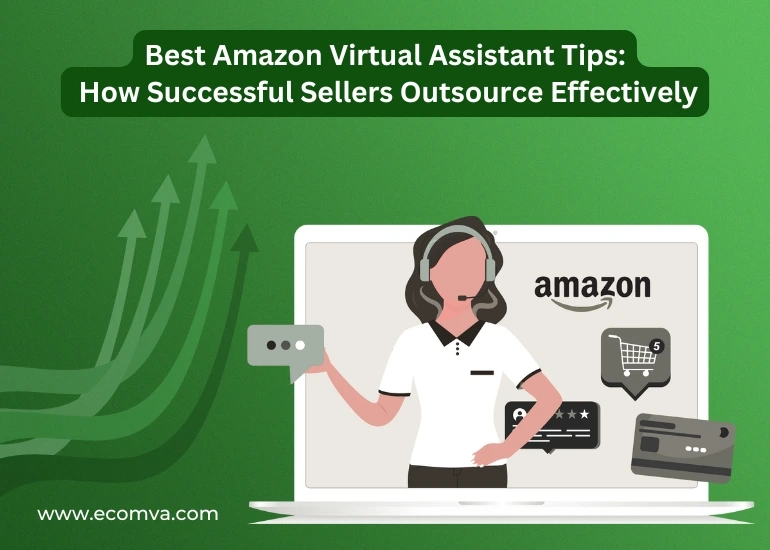
Amazon selling is fast, complex, and demanding. You spend time managing listings, tracking inventory levels, adjusting PPC, answering customer messages, and still want to grow your business. It’s a handful, too much sometimes. Hiring the Best Amazon Virtual Assistant brings relief. You delegate essential yet time-consuming tasks, and free your mind for strategy, new products or marketing.
If you are thinking about hiring a virtual assistant for your Amazon business but don’t know where to start, this guide will help you make the right call.
Why Top Amazon Sellers Outsource Work
Sellers used to juggle everything themselves. But Amazon’s pace doesn’t wait. Prices change, new features drop, support messages pile up. One person can’t do it all while growing the business.
Outsourcing helps keep you strategic. A trained VA can take over listing tweaks, FBA shipment prep, tracking inventory, fielding messages, and monitoring ads. That lets you focus on product sourcing, learning new tools, or exploring expansion.
Hiring the best Amazon Virtual Assistant is not just about handing off tasks—it’s about gaining a trusted support system that understands Amazon’s pace. These assistants are trained to handle listing optimization, keyword formatting, and backend logistics with precision.
Smart sellers delegate to stay ahead.
What Tasks You Should Outsource to a Virtual Assistant
Some of the most valuable tasks to outsource to Amazon VA involve repetitive admin or time-consuming research. Whether it’s updating product images to fit Amazon guidelines or adjusting listings for mobile view, these tasks can be easily assigned to a VA without affecting quality.
Here’s a breakdown of tasks to outsource to Amazon VA. Each is specific to Amazon needs:
| Area | Example Tasks | Why Outsource? |
|---|---|---|
| Product & Listings | Keyword research, creating listings | Requires accuracy and burns time |
| Advertising | PPC setup, bid adjustments, reporting | Needs daily attention and changes |
| Customer Support | Responding to buyer messages, returns | Fast responses maintain seller metrics |
| Admin & Operations | Inventory updates, FBA shipping prep | Repetitive but crucial for smooth logistics |
Organizing tasks this way helps you see exactly where help matters and why. Once you know what to outsource, you can build a system around it.
How to Outsource Effectively on Amazon
Outsourcing on Amazon is a structured process that, when done correctly, delivers serious time savings, better accuracy, and long-term growth. Whether you’re hiring your first VA or expanding your team, the way you approach the process directly impacts the results you get.
Here’s how to do it right:
1. Start with Clear SOPs (Standard Operating Procedures)
Before assigning any task, document your process clearly. Even basic instructions help:
- How to write a product title (character limit, format, primary keyword placement)
- Which tools to use for keyword research (Helium 10, Data Dive, etc.)
- What product image sequence should look like (infographic, lifestyle, plain white background, etc.)
If you’re outsourcing tasks like listing optimization or customer service replies, your VA needs to know your tone, structure, and product detail preferences. Think of SOPs as your Amazon business’s internal playbook.
Tip: Don’t overthink it. A Google Doc with bullet points and screenshots is a great start. You can refine it later.
2. Grant Access Safely and Wisely
When you hire someone to work inside your Seller Central account, access must be limited and secured. You can do this in a few ways:
- Use User Permissions in Seller Central to assign only what’s necessary (e.g. manage inventory, view reports, answer messages)
- Share login credentials using tools like LastPass or 1Password, without giving away direct access
- Avoid giving financial or tax document access unless you’re working with a trusted, long-term VA under NDA
Security is essential, especially with sensitive business data and financials on the line.
3. Use Simple Tools to Track and Communicate
Good outsourcing doesn’t require fancy software. What you do need is visibility and clarity. These tools help:
- Trello (or Click Up): great for task boards, to-do lists, due dates
- Slack or Skype: for direct, real-time communication
- Google Sheets: perfect for shared product tracking, keyword lists, and version control
- Loom: record screens to visually show the VA how a task is done (much faster than long emails)
Set up a basic weekly workflow. For example:
| Day | Activity |
|---|---|
| Monday | Assign tasks, review last week’s work |
| Wednesday | Midweek check-in via Slack |
| Friday | Submit completed deliverables & progress updates |
That rhythm keeps your VA in sync without micromanagement.
4. Build in Feedback Loops
Your VA needs clear and regular feedback to stay on track and deliver good work.
Every week, go over:
- What went well
- What needed improvement
- What changed on Amazon that they should know (e.g., new listing image rules, policy updates)
- Adjustments to SOPs or keyword targeting
If your Amazon virtual assistant services include PPC or content updates, ask them to provide weekly reports. They should explain what they changed, why they did it, and what outcome they expect.
This ongoing communication builds mutual trust and leads to stronger performance.
5. Start Small, Then Scale
Start with one or two tasks that are easy to verify. Good beginner examples:
- Update 3 low-performing listings using current keyword data
- Prepare next week’s FBA shipping plan draft
- Respond to common customer queries using canned responses
Once the VA delivers accurate, timely results, expand the scope. You might then outsource:
- A/B testing new product titles
- Full PPC campaign build-outs
- Bulk inventory audits
- Listing image uploads and monitoring compliance
A gradual approach protects your Amazon account health and ensures the person from Amazon virtual assistant services you’re working with really knows their job.
6. Document as You Go
Outsourcing needs updates over time. As your process changes, update your SOPs to match.
For example:
- Your refund response policy changes? Update the canned response template.
- Amazon changes image requirements? Add that to the listing SOP.
- You switch to new keyword tools? Add a Loom video showing how to use them.
This documentation helps onboard new VAs in the future and keeps everything standardized.
7. Treat Your VA as a Team Member
Even if your VA is remote or freelance, involving them in results builds long-term loyalty and motivation. If a listing they optimized helped raise sales, share that win. If a new title led to a ranking bump, let them know.
A motivated assistant who feels trusted is far more productive than one who’s treated like a task robot.
Common Mistakes to Avoid When Outsourcing Amazon Work
Some sellers hand off too much too soon. That often fails.
Here’s what to avoid:
- Dumping tasks without training—means confusion and fixes.
- Vague task requirements—“just update the listing” isn’t enough.
- No tracking or review—if you don’t measure results, you’ll miss errors or lost sales.
- Skipping feedback sessions—keeps mistakes repeating.
- Ignoring results from PPC or listings—without review, poor changes slip silently.
Avoid these, and outsourcing becomes smooth, not stressful.
Realistic Results: What to Expect When You Delegate Properly
Imagine handing off product research to an Amazon VA. One seller told me this freed them over 20 hours each month. That time went straight to planning new promotions and cracking into a new product category.
Here’s what typically improves:
- Listings updated faster and with relevant keywords.
- Buyer messages answered quicker—keeping return rates low.
- More time for high-level work: sourcing, bundles, marketing.
Don’t overlook the impact of a good Amazon FBA virtual assistant. From prepping shipment plans to checking stranded inventory reports, they help you stay compliant and organized. Even something as simple as monitoring delays or warehouse status updates can save you from revenue loss.
What to Do Before You Hire an Amazon VA: A Quick Checklist
Here’s a straightforward checklist for when you’re ready to hire:
- Define Tasks Clearly
What are the exact tasks to outsource to Amazon VA? Decide whether you’re outsourcing product listing updates, customer messages, PPC campaign management, or FBA prep.
- Set Your Budget
Know what you can spend monthly versus savings.
- Create SOPs
Even bullet point steps are better than nothing.
- Choose Wisely
A freelancer may fit small needs. Agencies or VA services give training, backup, and Amazon-specific experience.
- Check for Amazon Skills
Ask who used Seller Central, understands FBA rules, has used PPC, knows return policies, and can draft clear listings.
Before making a final decision, revisit the core tasks to outsource to Amazon VA. Ask yourself which ones slow you down, require repetition, or can be standardized.
Your Next Move as an Amazon Seller:
Amazon selling comes with daily challenges. A best Amazon Virtual Assistant helps you save time and stay focused. They save time on listings, support, and logistics. That time gets invested in strategy, product development, or growing your brand.
When you bring in a trained, reliable VA, you keep your store efficient and your mind clear.
Looking for the best Amazon Virtual Assistant who understands listings, PPC, FBA, and customer experience? EcomVA provides complete Amazon virtual assistant services, from routine admin support to full-service Amazon content services that help your listings convert better.
Delegate well. Work smart. Let your Amazon business thrive.
FAQs
1. How do I know if my Amazon VA is actually helping my business grow?
Start by tracking performance data tied to their tasks, things like listing sessions, conversion rate, ad ROI, or response time to buyer messages. If your assistant handles PPC or listing updates, you should see measurable improvements in sales, ranking, or account health over time.
2. Can I hire an Amazon VA for seasonal work only, like Q4 prep?
Yes. Many Amazon sellers bring in virtual assistants during peak seasons like Black Friday, Prime Day, or Christmas. Just make sure to give them at least a week or two to understand your store before jumping into high-volume periods.
3. What tools should an experienced Amazon VA already know how to use?
At minimum: Seller Central, Amazon FBA dashboard, Helium 10, Jungle Scout, Google Sheets, and basic task trackers like Trello or ClickUp. If they also know Canva for listing visuals or ManageByStats for reporting, that’s a bonus.
4. Is it better to hire a general eCommerce VA or someone specialized in Amazon?
Always go with someone trained specifically in Amazon. General eCommerce VAs may understand Shopify or WooCommerce but might not be familiar with FBA rules, A+ content layouts, or Amazon’s performance metrics, which are non-negotiable for sellers.
5. Should I consider hiring more than one VA for different areas of my Amazon store?
If your store is large or growing rapidly, it can be smart to divide tasks between multiple specialists. For example: one for PPC, one for product listing optimization, and one for support or operations. This helps keep quality high and output consistent.
6. How do I train a VA without spending too much of my own time?
Use screen-recording tools like Loom to explain repeatable tasks once. Save all SOPs in shared folders. You can also batch train over a video call, record it, and use that session to onboard future assistants. One-time training can go a long way with the right documentation.

